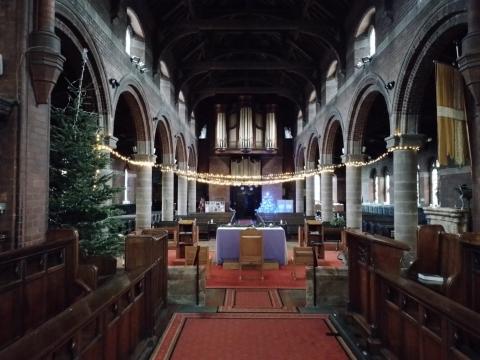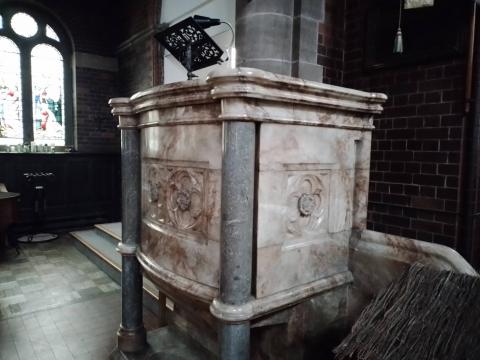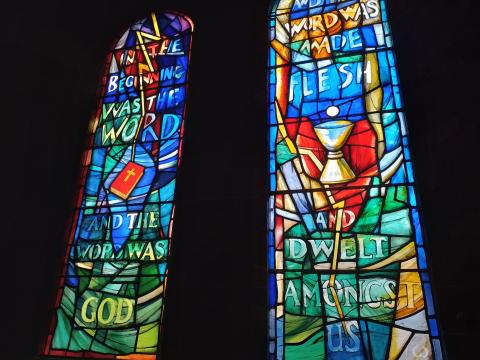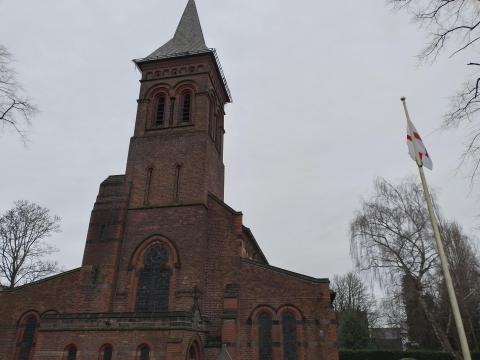St George's Church, Altrincham: Word & Flesh

St George’s Church at Altrincham was cold and dark when I called; it was a dull December morning, though the door was unlocked and the Christmas lights lent the premises an otherworldly charm. Little arrested me as odd or unusual, though I noted the heavy marble pulpit and its unusual square shape.

Strangely luminous for such a dull day were a pair of modern stained-glass windows. Unlike the dull Victorian tat which presumes to clutter most parish church windows, these colours were vivid and cheerful. I was also pleased to see that a scriptural text was there quoted, instead of some dreary assortment of medieval blokes, nineteenth-century civic dignitaries or some plump benefactress.

In the beginning was the word…and the word was God…and the word was made flesh…and dwelt among us, quoting some key verses from the first chapter of John’s gospel. As Christmas was approaching, these profound theological claims lent some dignity and gravity to all the twinkling fairy lights with which the nave was bedecked. Unfortunately, between the last two clauses, a picture of a communion chalice and a round wafer was observed. This suggests the Roman or Anglo-Catholic belief in transubstantiation, in which the consecrated bread and wine literally turn into Christ’s real flesh and blood. We true Protestants reject such a notion, and our early forbears paid with their lives for refusing to adore the crumbs and drops. In the windows’ defence, an image of the Bible appears between clauses 1 and 2, and no one suggests that the Word of John 1:1 is the Bible, or that Jesus turns into a paper book. Yet the chalice and the wafer are often a dangerous form of distraction which can be idolatrous. To kneel by, to genuflect before, to cross oneself in the presence of bread and wine is to offer them an honour and worship to which they are not entitled. The Word became flesh, actual human flesh, that was bruised and pierced, not wine and bread, that drips and crumbles.

- Log in to post comments


 Sunday Worship 10.45am & 6.00pm
Sunday Worship 10.45am & 6.00pm